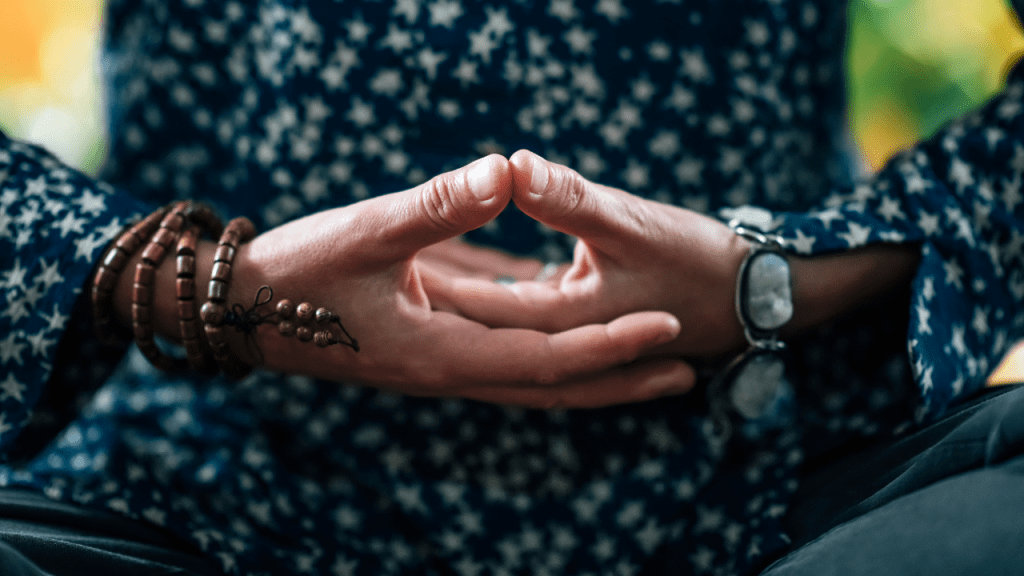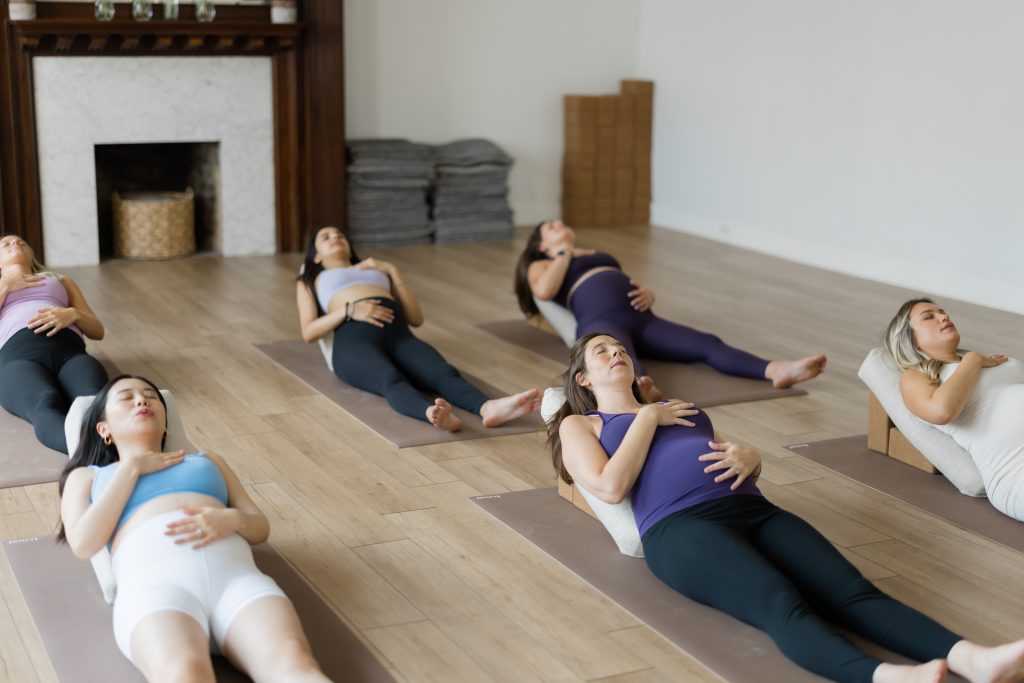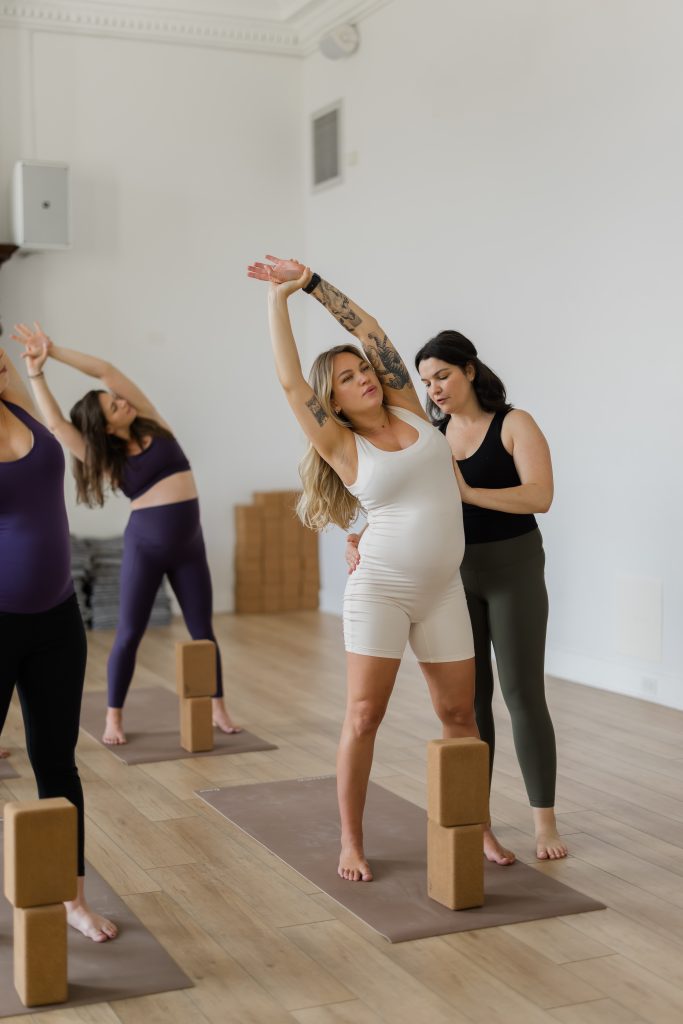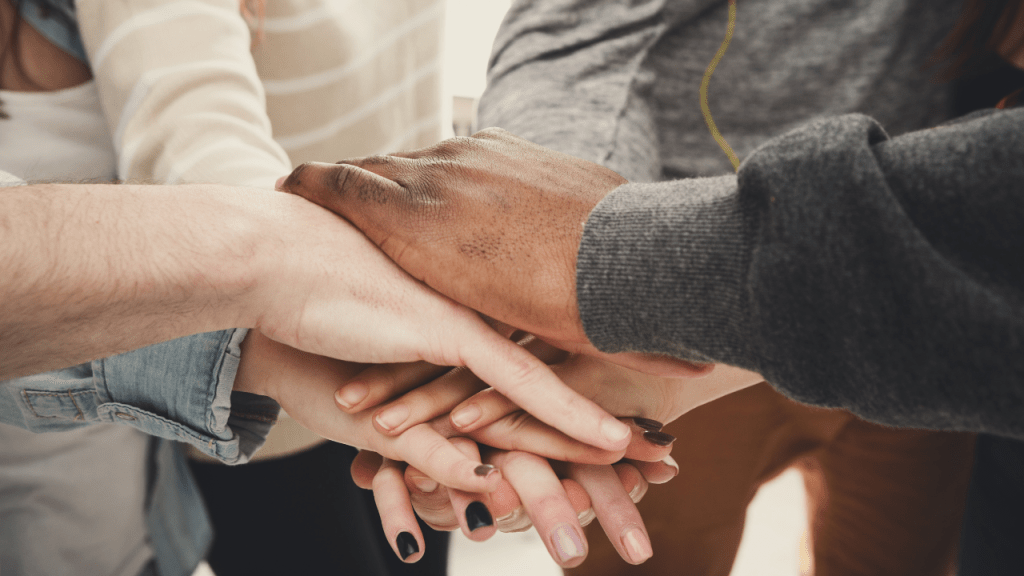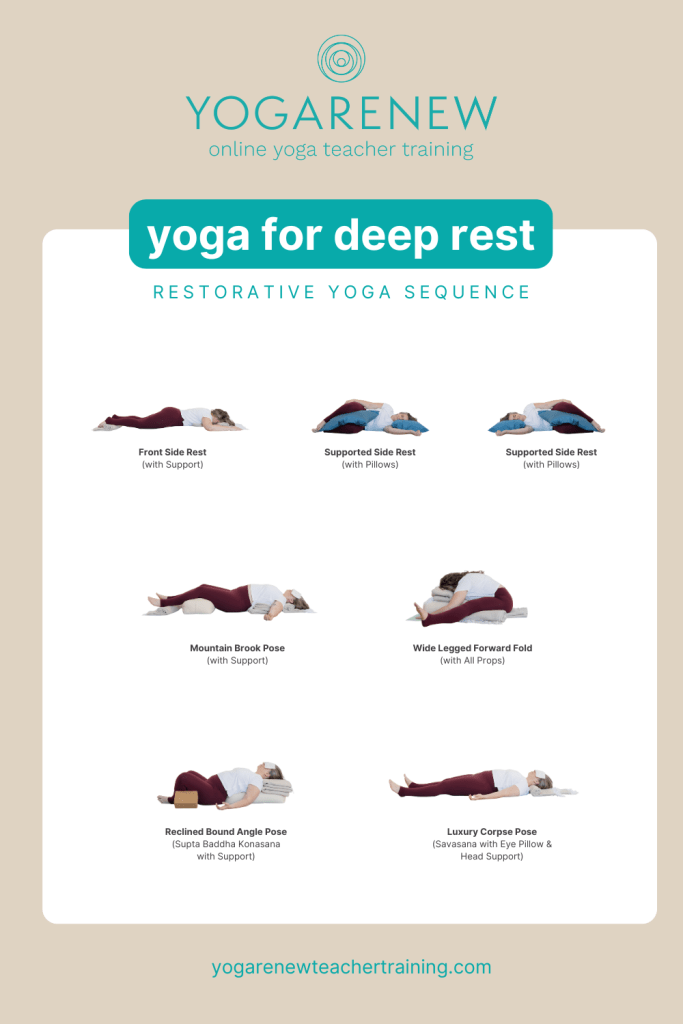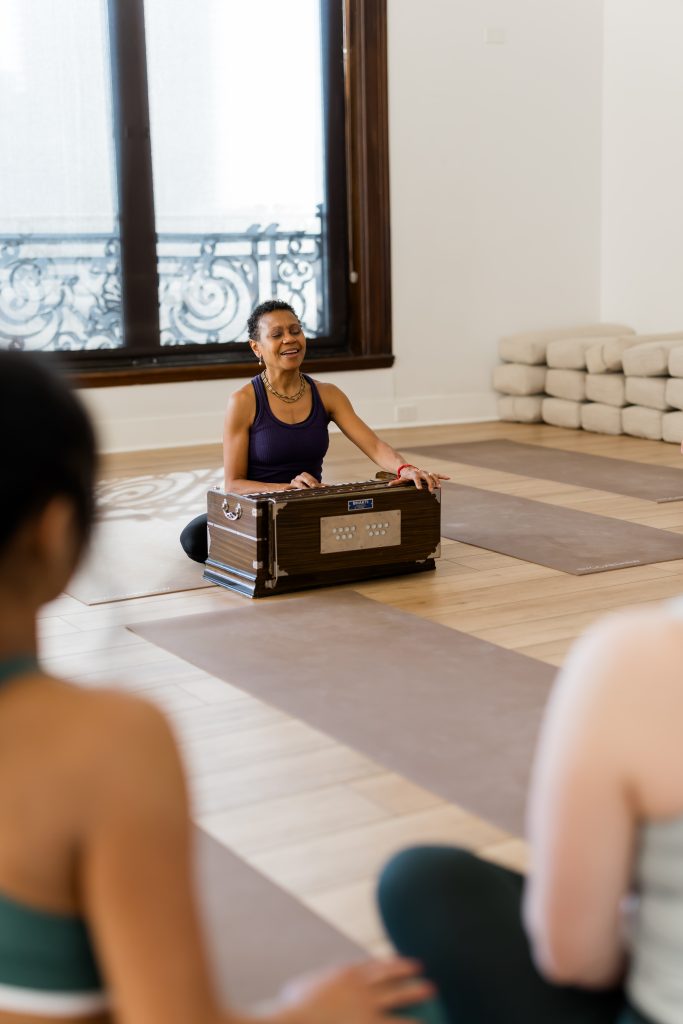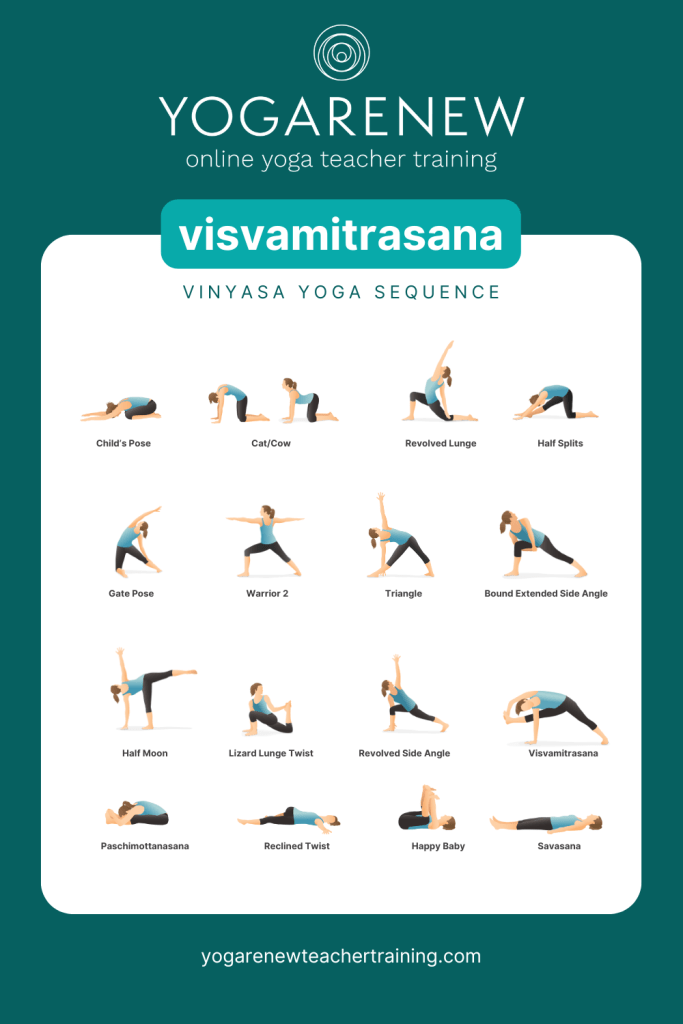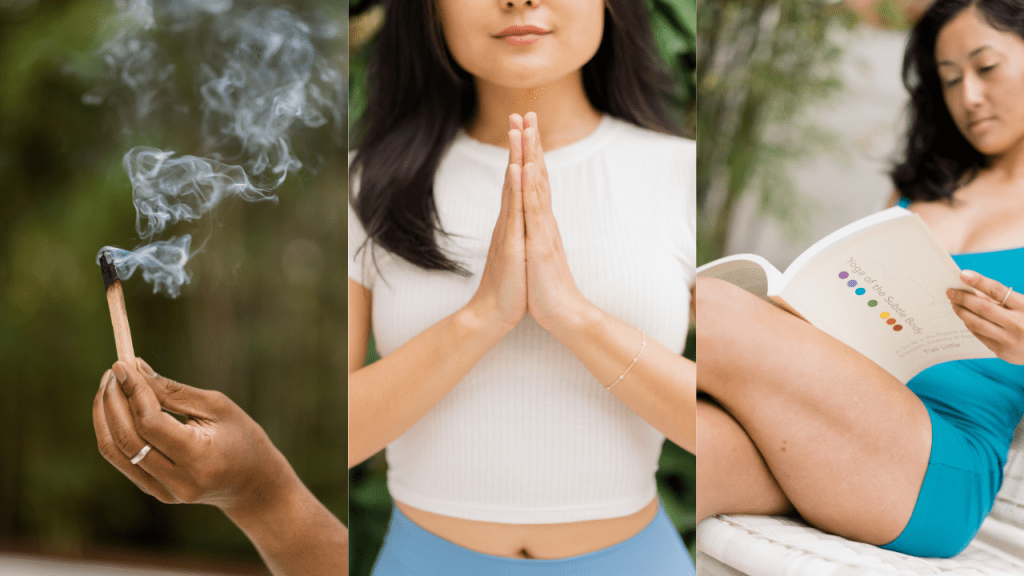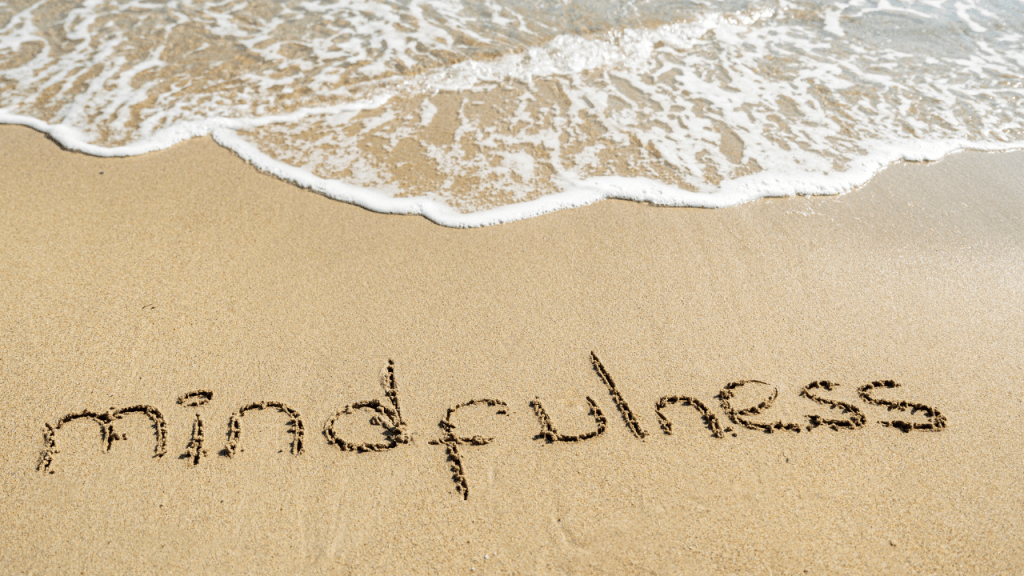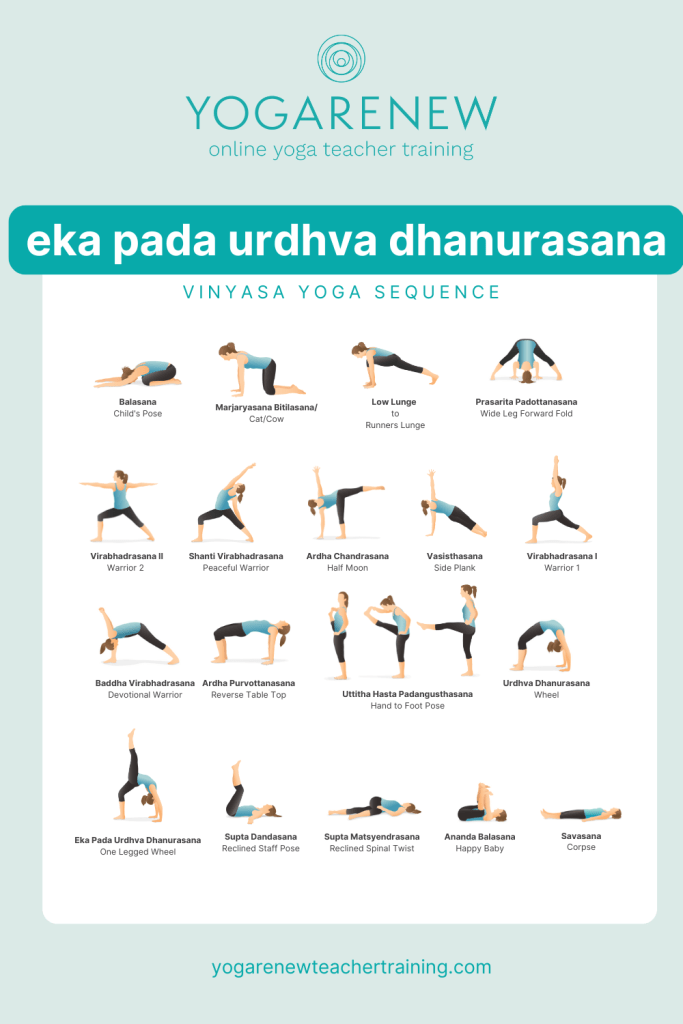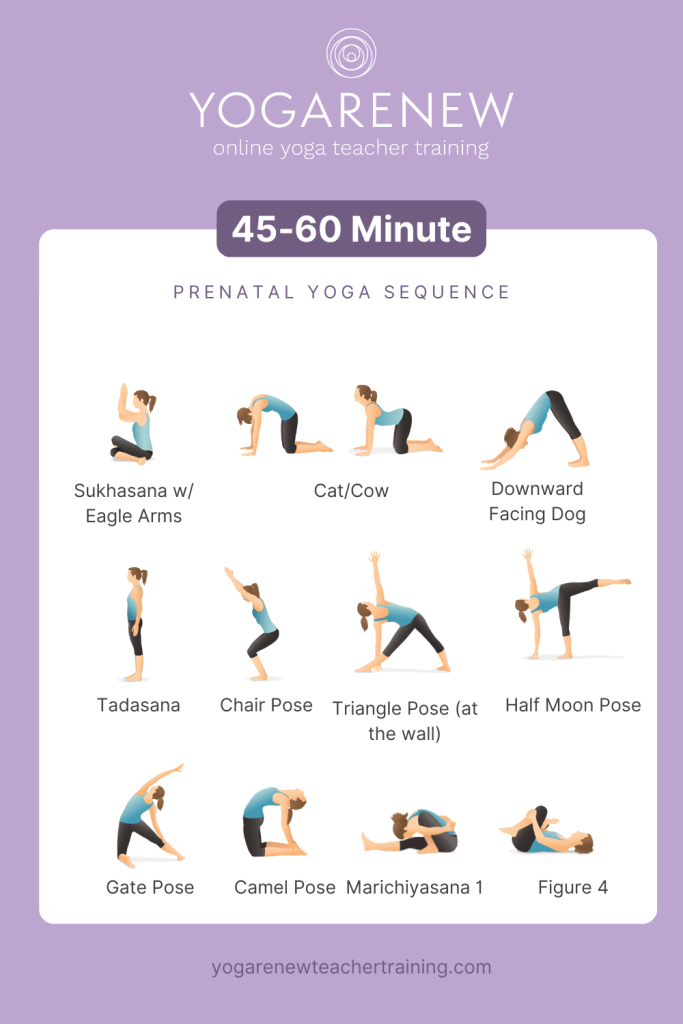
| Phase | Approx Time | Focus / Cueing | Pose(s) & Transitions |
|---|---|---|---|
| Centering & Opening | 5‑7 min | Invite connection to breath, soften restrictions, gentle awakening | 1. Begin seated in Sukhasana (easy cross‑legged). Option to use bolsters under sit bones. 2. From Sukhasana, inhale to lengthen spine, exhale soften. 3. Add twist with eagle arms (i.e. gentle open twist / side bend) — twist toward open side (so no compression of belly). Hold a few breaths each side. 4. Return to center. |
| Warm‑Up (on all fours / transitions) | 8‑10 min | Mobilize spine, open shoulders, prepare for standing | 1. Cat / Cow — 5–8 rounds (slow, moving with breath) 2. DD (Downward Dog, modified) — from Table, tuck toes, lift hips. Option to keep knees bent and heels lifted. Hold for a few breaths, pedal calves 3. Return to Table, then transition to standing via gentle lunges or rising through a half‑kneeling prep. |
| Standing & Thigh Engagement | 10–12 min | Stability, inner thigh engagement, balance work | 1. Tadasana with block between thighs — stand tall, block gently squeezed between inner thighs to engage adductors 2. Chair pose with clock (block) between thighs — sink into chair, maintain the block, optionally sweep arms or keep hands to heart 3. From chair, step one foot back to wall and practice Triangle at the wall (front foot toward wall) — use a block or wall for support 4. Transition to Half Moon at the wall (with wall support) 5. Then come down to Gate Pose (side stretch) on each side |
| Backbend / Opening + Seated Work | 8–10 min | Gentle back extension, hip and leg release | 1. Camel (Ustrasana), modified — use blocks under hands, keep soft in lower back, don’t force. 2. Return to a gentle neutral spine, come to seated 3. Marichyasana I (open, no clasp) — one leg extended, other knee bent — twist just to comfort, no compression 4. Figure‑4 Stretch — seated or lying (side) version, gentle opening of glutes/hips |
| Cool‑Down & Transition to Rest | 5 min | Soften, unwind, prepare for final rest | 1. Gentle side stretches or spinal elongations seated 2. Gentle hip rolls or knees‑to‑chest (if comfortable) 3. Revisit Sukhasana or comfortable seated posture for a few breaths, invite release |
| Savasana (Side‑Lying Rest) | 5–10 min (or more) | Deep rest, allow full support | Encourage lying on the left side (or whichever side feels best), with pillows between knees, under head, maybe back support. Encourage soft breathing, letting go of tension. Close in seated or child’s pose gently. |
Suggested Class Sequence + Cueing
Puttering
-
Opening / Centering
-
“Come into a comfortable cross‑legged seat. Soften your shoulders. Close the eyes or soften the gaze. Inhale to lengthen, exhale to ground into your seat.”
-
“On your next inhale, open the arms—or bring elbows bent, wrap into eagle arms (right under left or vice versa). On exhale, gently twist to one side, allowing the twist to be open (not compressing belly). Hold 3–5 breaths. Return center, switch twist side.”
-
-
Cat / Cow → Downward Dog
-
“Come to tabletop. With an inhale, melt your belly, lift chest (Cow). On exhale, round your spine, chin toward chest (Cat). Flow 5–8 rounds slowly, feeling space in mid and low back.”
-
“From tabletop, tuck toes and lift hips back to Downward Dog (use micro‑bend in knees). Take several breaths here, pedaling each foot.”
-
“Walk feet forward or step through a lunge to come up toward standing (or a half‑kneeling preparatory posture).”
-
Standing / Thigh Engagement & Balance
-
Standing & Balancing
-
“Stand tall in Tadasana, block between inner thighs, gently pressing in to activate inner legs.”
-
“Sink into Chair pose, keeping the block, lengthening spine, maybe arms overhead or staying at heart. Stay 4–6 breaths.”
-
“From chair, step one foot back so your back heel is near the wall; set up Triangle at the wall (front foot + torso tilt). Use support as needed — block or wall.”
-
“Then shift to Half Moon at the wall — back leg lifts with support, reaching through the top arm.”
-
“Return to standing, find Gate Pose: kneel (or modified), side stretch the torso over one extended leg. Repeat opposite side.”
-
-
Backbend + Seated / Hip Openers
-
“Come back up, tuck toes under, come onto knees (hip‑width). Camel: place hands on low back or blocks, lift chest, lengthen through front of hips. Move slowly in and out.”
-
“Return to seated. Extend one leg, bend the other, and find Marichyasana I (open, no clasp) — twist gently, keep the spine long, no force.”
-
“Then tuck legs or come to lying‑or seated Figure‑4 stretch — cross one ankle over opposite thigh, flex bent knee side for support, deepen as comfortable.”
-
Wind Down
-
Cool‑Down & Rest
-
“Ease out of seated, maybe side bends, gentle spinal movements, softening.”
-
“Prepare for final rest: lie down on your side (preferably left), with bolsters or pillows between knees, under head, and behind back for support.”
-
“Allow breath to deepen, allowing tension to melt away. Stay here for 5–10 minutes (or more). When ready, roll gently up to seated to close.”
-
Modifications & Safety Notes (Prenatal Considerations)
- Encouraging wide stances / softer bends / support (blocks, wall) is key.
- Twists should be open — avoid compressive or deep twists.
- In later pregnancy, avoid lying flat on back for extended time (use side‑lying or incline).
- For Camel, don’t overarch; use support (blocks or hands on lower back) to avoid lower back strain.
- Always offer the choice to skip or do gentler variations — e.g. Half Moon near wall, keep foot lower, hand on block or wall.
- Use plenty of props: bolsters, blocks, blankets, wall support.
- Remind students to stay hydrated, and to rest if any discomfort arises (e.g. dizziness, uterine pressure, etc.).
👉 For more information & to learn how to guide pregnant students, visit our Online Prenatal Yoga Teacher Training Course.


